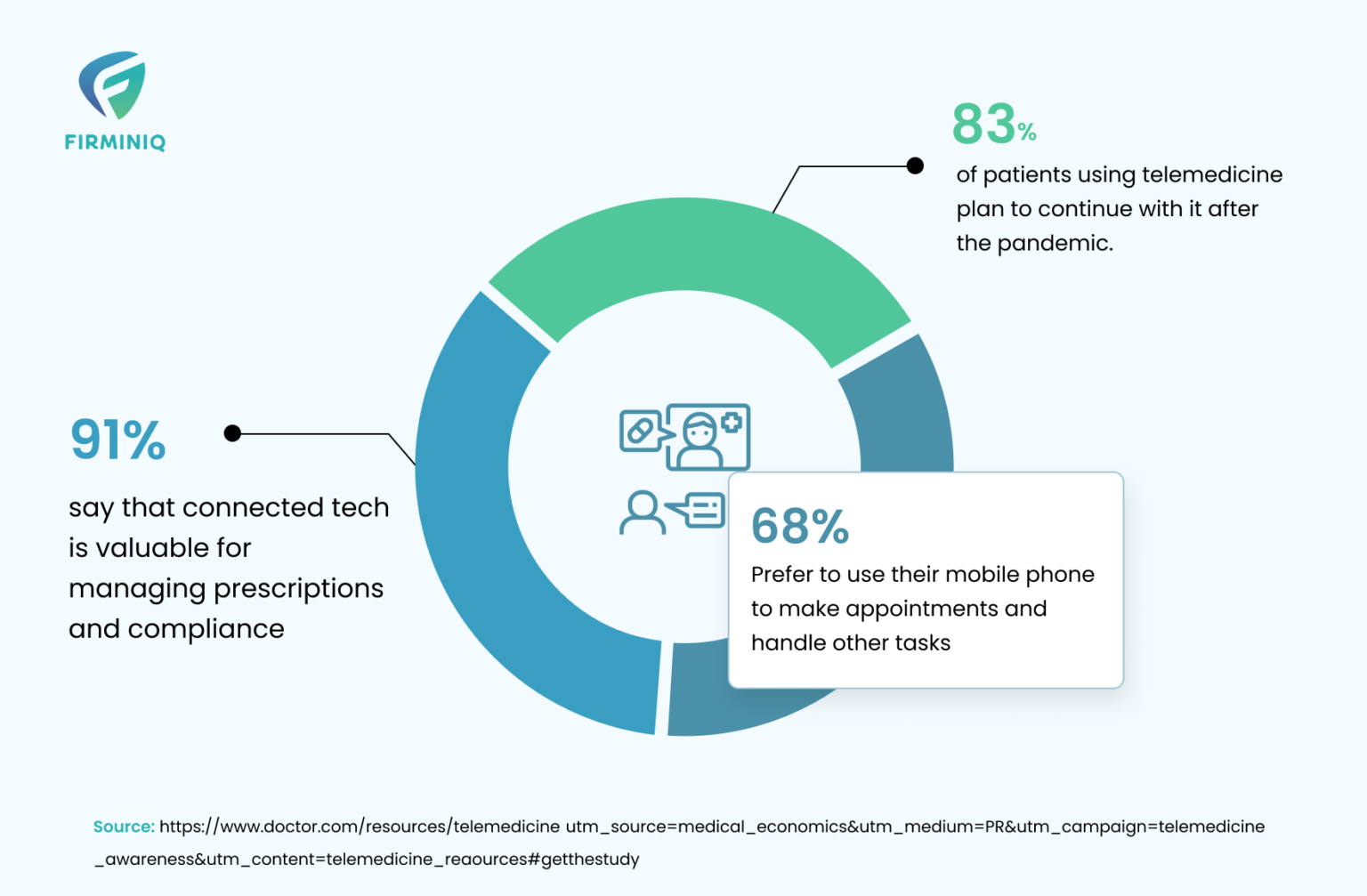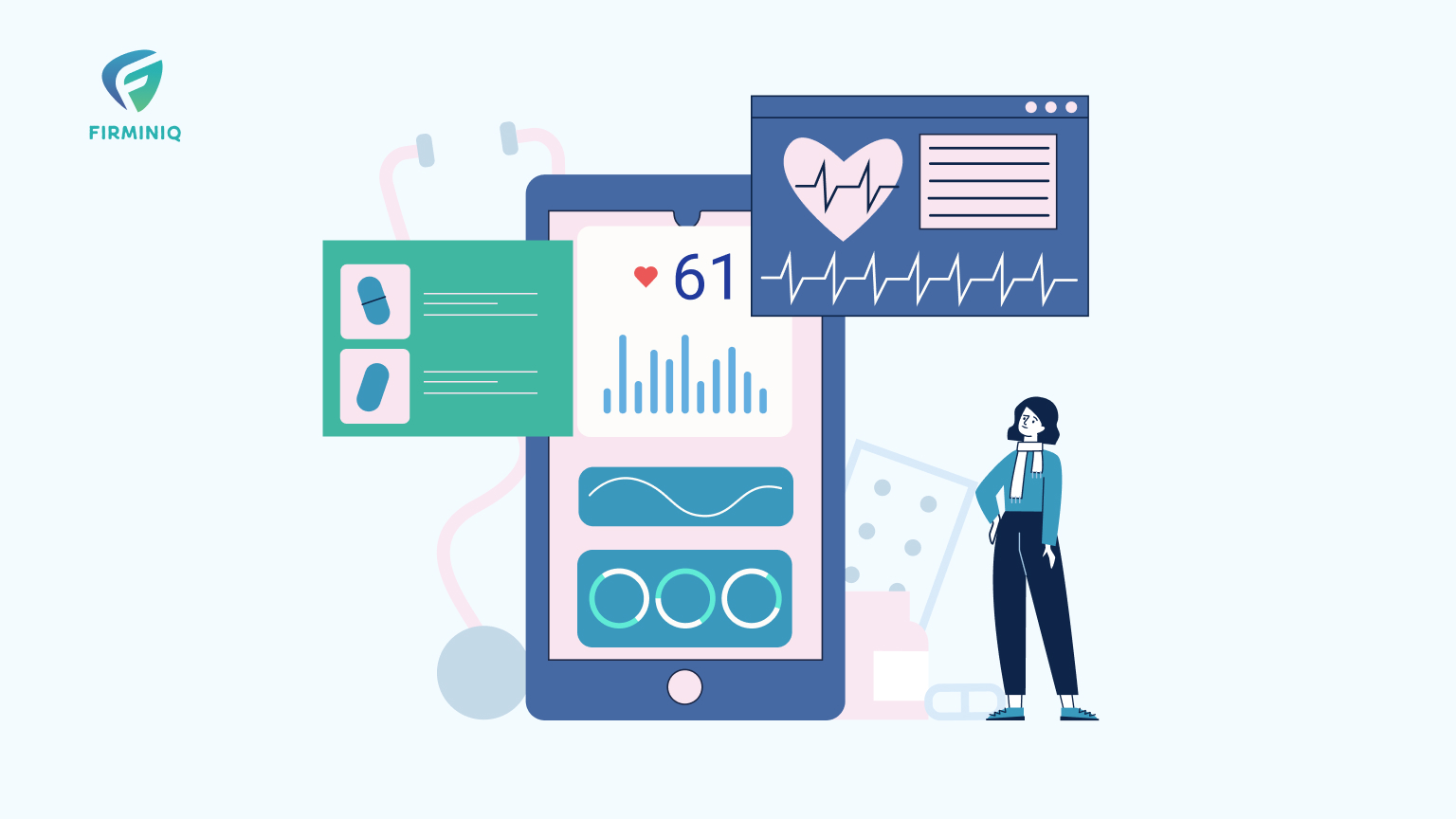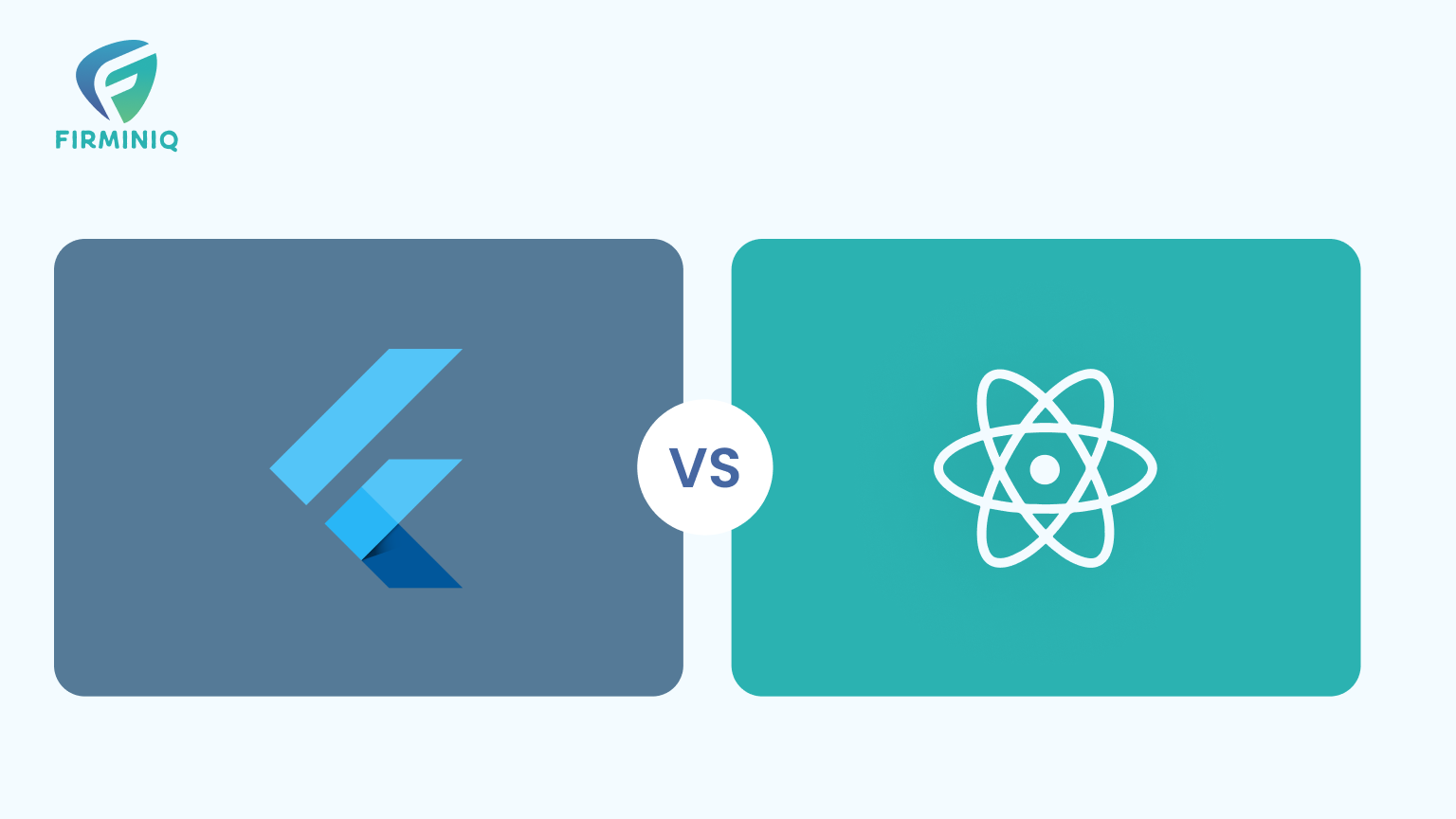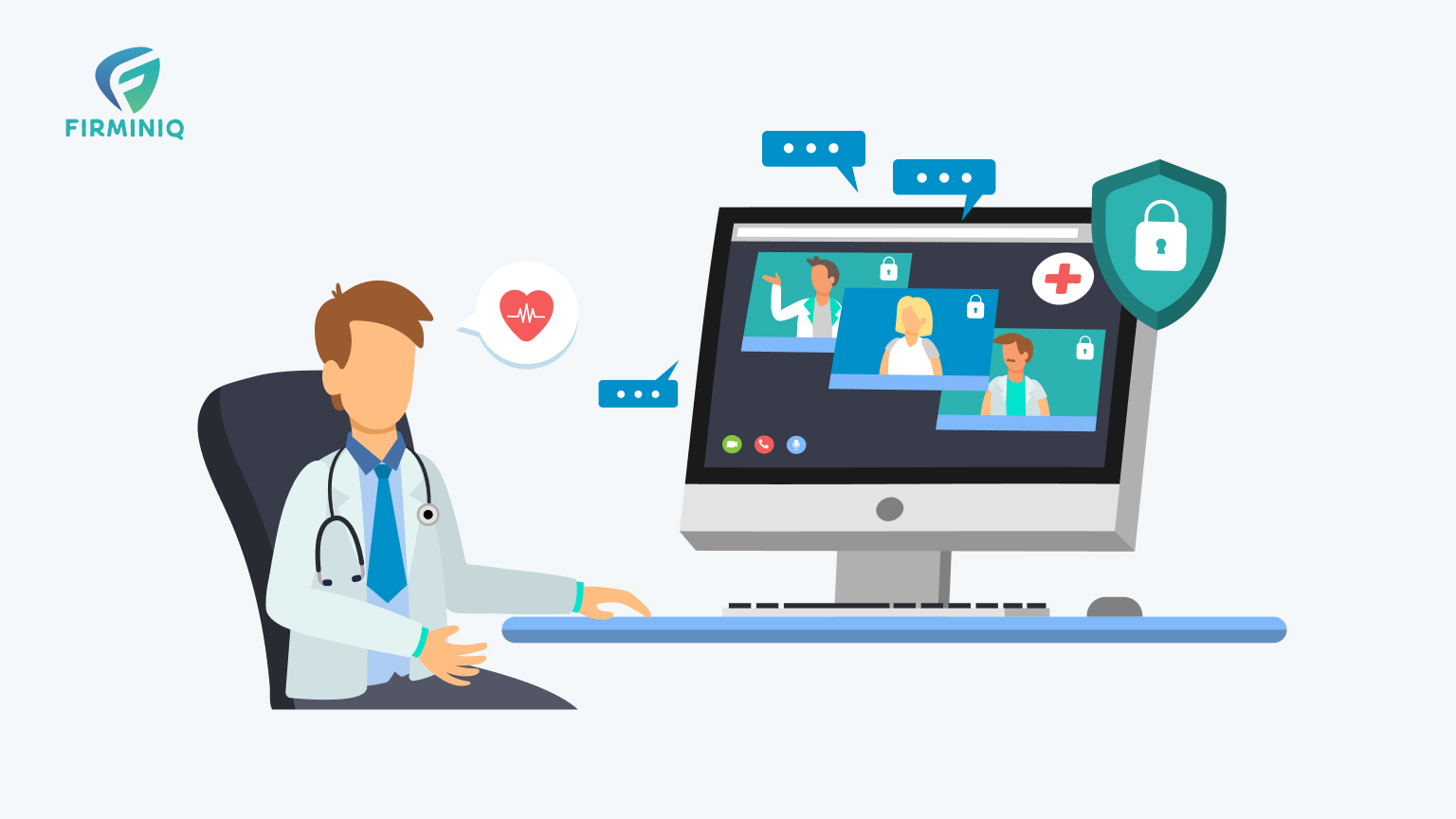“The global connected healthcare market is projected to grow from $51.68 billion in 2021 to $297.95 billion in 2028 at a CAGR of 28.4% in the forecast period.” – Fortune Business Insights
“Revenue in eHealth apps is expected to show an annual growth rate (CAGR 2023-2027) of 13.00%, resulting in a projected market volume of US$3.00bn by 2027.” – Statista
“83% of patients using telemedicine plan to continue with it after the pandemic. 68% prefer to use their mobile phone to make appointments and handle other tasks, and 91% say that connected tech is valuable for managing prescriptions and compliance.”– A study from Doctor.com
Considering the statistics above, it is clear that the technology for connected healthcare has taken a big leap forward and shows no signs of slowing down. Businesses operating in the healthcare domain that ignore shifting from legacy models to connected healthcare at this time also are doing it at their own peril. Without a doubt, one of the most essential requirements of healthcare organizations today is a secure & compliant software solution that improves not just patient’s access to quality & timely care but also enhances the organization’s efficiencies simultaneously.
- Custom-Built: Bespoke software solution that is made to meet the specific requirements of the organization.
- Off-the-Shelf: A pre-built solution that is generic and is built for organizations in general.
What are the pros and cons of each solution? Why should your healthcare organization prefer one over the other? The post outlines the benefits and drawbacks of each solution based on various parameters.
However, before delving deep into finding an answer to which approach is best suited for your connected healthcare project, it is worth understanding the various components involved in taking a plunge from healthcare to connected healthcare.
Gearing-up for Connected Healthcare
It is vital for healthcare organizations to thoroughly understand the different aspects of connected healthcare to efficiently connect the dots between various players on the technology front to leverage the full potential. Though the software forms the base of advancing into the connected healthcare ecosystem, the organizations need to understand the following layers as well:
- End-to-End Development: Right from ideating with prototyping to testing with an MVP (Minimum Viable Product) to taking care of maintenance and scaling; end-to-end development involves a range of activities. This includes UI/UX Design, development, quality engineering, backend & middleware, etc.
- Data Flow Management: A thorough plan of complete data flow management from patient to hospital EMR needs to be laid.
- Establishing Connectivity: A developed app is futile unless connectivity with the devices (medical/non-medical) is established. This is done via BLE (Bluetooth Low Energy)/Wi-Fi.
- Secure Data Sharing: Another vital layer includes enabling secure healthcare data interoperability by leveraging a compliant architecture & strict security in place. Our data sharing could be between cloud-to-cloud, app-to-app, mobile Apple /Google /Samsung Apps or with hospital EMR/EHR.
- Cloud & DevOps: Faster building and deploying of healthcare applications is achieved with cloud infrastructure management, CI/CD services, managed DevOps, etc.
- Integrations: In case the devices do not connect with the app, an integration with the hub running on RTOS or Android to connect to BLE devices is required and data is shared as in IoT (Internet of Things).
- Insurance & Financing: Billing logic, audit requirements, and reporting for insurance and financing purposes also needs to be put in place.
To learn more, read our whitepaper on CXO’s Guide to Connected Healthcare.
COMPARISON BASED ON KEY PARAMETERS
Whether to go for a custom-built healthcare software or an off-the-shelf solution is a question that does not have a clear this/that answer and varies based on an analysis of various factors. Here is a quick comparison of the two approaches based on different parameters.
Let’s talk about each parameter in detail and understand how each one affects the decision to make a choice between the two approaches.
Features
Without a doubt, the features or functionality of a healthcare software is vital to ensure its success. The feature set available with pre-built healthcare app vs a custom one is not difficult to discern. A pre-built healthcare product typically has a limited set of features that a healthcare organization can use. On the other hand, a custom product can be developed with specific features that meet the unique requirements of an organization. A custom app can give an edge to the organization with unique features that can assist patients manage their health in a more autonomous way, thus improving patient loyalty.
Integrations
Another important consideration for healthcare organizations is the ability of the software to integrate with the current software including the EMR (Electronic Medical Records) software, EHR (Electronic Health Records) software, billing software, appointment scheduling software, etc. or third-party software that are required. A custom-built app or RPM (Remote Patient Monitoring) solution offers better flexibility to integrate with any existing or third-party software that has interface capabilities including HL7, API, etc. On the other hand, a pre-built healthcare software generally comes with flexibility to integrate with popular systems and might not have the flexibility to meet all requirements.
Cost
Cost is a crucial factor that healthcare organizations must consider while making a decision between custom & off-the-shelf software. A custom-built app generally requires a higher initial investment as compared to an off-the-shelf healthcare product. However, initial cost shall not be the sole deciding factor. An off-the-shelf solution might cost less initially but might end up consuming more over time, due to the need for feature enhancements, scalability requirements, inefficiencies, etc.
Scalability
While making a decision it is worthy answering these questions – Will your healthcare organization have scalability requirements in the near future? What does the load on the application look like in 3, 5, 10 years down the line? Do you need a system with the ability to handle increased demand or additional users? An answer to these will help you know the scalability requirements of the medical app and thus make a wise decision in the initial stage to go for a custom solution or an off-the-shelf one.
A custom-made software product can always be built with scalability in mind and using scalable technology and architecture to handle increased demand. On the other hand, a ready-made solution may or may not be built using established, scalable technology and architecture. Whether the solution can handle a high volume of patient data or not, can be checked with the vendor.
Branding
Branding helps create a unified patient experience across the entire journey, contributing to trust. An off-the-shelf healthcare software is typically branded by the software company to which it belongs. Thus, such solutions offer limited options to customize the branding of the software as per the healthcare organization using it. E.g., one might be able to change the color and add a logo, but not edit the overall appearance or branding. Alternatively, a custom healthcare software offers more flexibility when it comes to branding as it is built specifically for a single organization and can fully reflect the brand in color, style, graphics, etc.
Implementation Time
Implementation time is crucial to consider right at the initial stage to avoid possible additional costs and pitfalls in the future. A ready-to-use healthcare software can typically be deployed quickly. However, it generally has limited customization options and thus the time to adjust the same to an individual organization’s needs may be slow. Alternatively, a custom healthcare solution is built from the ground-up as per specific requirements of an organization and thus it might take longer to design, build, test and deploy the software. However, even though the deployment time is relatively longer, it offers more flexibility and can be tailored to meet the specific needs of the healthcare organization and thus result in a more efficient implementation.
Security & Compliance
“Healthcare data breach costs highest of any industry at $408 per record.” – HIPAA Journal. Considering the statistics above, it is not wrong to infer that security & compliance is crucial for the healthcare industry more than any other. Thus, it is vital to consider data security and regulatory compliance while making a decision about which approach to take for software development.
Off-the-shelf healthcare software is generally built to meet the common security and regulatory compliances. However, it is generally a one-size-fits-all kind and thus it can be comparatively less secure and compliant than a custom developed healthcare software. The latter is designed to meet specific needs of a healthcare organization and thus allows better control over security & compliance. Overall, both custom and off-the-shelf software can meet security & compliance requirements, but a custom built can allow for better flexibility and control.
COMPARISON BASED ON YOUR NEEDS/REQUIREMENTS
A healthcare mobile app or RPM solution that can connect with patients well, provide information analytics to physicians and keep all the data updated & secure is what most healthcare organizations are looking for. However, a look at the advantages that come along with each choice can help make a wise decision. Below is a list of pros of each approach.
Over to You
A custom healthcare software offers better security, compliance, scalability & flexibility. On the other hand, an off-the-shelf healthcare software is readily available for use and has low initial investment. It is worth taking an informed decision after comparing each approach based on different parameters and scenarios as well as listing down the pros & cons of each as per the specific needs of your healthcare organization. A discovery phase or ideation phase can serve as a good starting point to list down specific needs in discussion with all the decision makers and stakeholders.
Still have questions or wish to consult a reliable digital service provider in connected healthcare ecosystem? Discuss your needs with us today!










